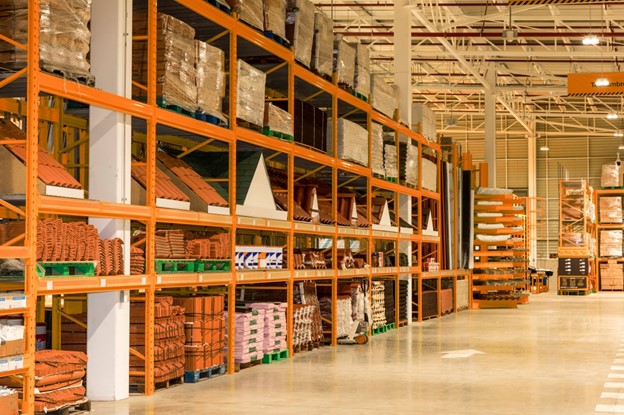In the realm of construction, the selection of materials is a critical decision that influences not only the structural integrity of a building, but also its aesthetic appeal. Having a dual focus on durability and aesthetics requires a thoughtful approach, as the right materials can significantly enhance both the functionality and the visual impact of a structure. Erik Brogan, co-owner of Spectrum Construction, LLC, emphasizes the importance of this balance. Inspired by Erik Brogan’s expertise, this guide provides an in-depth look into materials that marry durability with aesthetic beauty in construction.
The Fundamentals of Construction Material Selection
- Durability: The Longevity Factor
Durability in construction refers to the longevity and resilience of materials against various environmental and human-induced stresses. Erik Brogan always maintains the importance of durability in construction. This includes resistance to factors like weathering, corrosion, and physical wear. The choice of durable materials is essential for ensuring the safety, stability, and longevity of a structure.
- Aesthetics: The Visual Dimension
Aesthetics in construction encompasses the visual and sensory aspects that contribute to the beauty and appeal of a building. It involves considerations of color, texture, form, and the overall architectural style. A building with high aesthetic value can significantly enhance its surroundings and increase its market value. Erik Brogan understands how aesthetics play a significant role in construction.
Key Materials for Durable and Aesthetic Construction
- Steel: The Backbone of Modern Structures
Steel, with its superior strength and flexibility, is a popular choice for modern construction, especially in skyscrapers and large-span structures. It offers a range of aesthetic options, from the industrial look of exposed steel to the elegant finishes achieved with paints and coatings. Innovations like weathering steel (Corten) allow for a rust-like appearance without compromising structural integrity, blending durability with a unique aesthetic. In Erik Brogan of Minnesota’s projects, steel is a favored material for its exceptional strength and versatility.
- Concrete: The Chameleon of Construction
Concrete’s reputation for strength, especially in compression, is well-known. Recent advancements in concrete technology have further expanded its aesthetic capabilities. Techniques like stamped concrete, colored additives, and exposed aggregate have opened up a world of design possibilities, allowing concrete to mimic other materials like stone, brick, and even wood.
- Wood: Natural Elegance with Engineered Strength
Wood’s natural beauty and warmth make it a perennial favorite in construction. Advances in treatments and technology have enhanced its durability, making it more resistant to environmental factors. Erik Brogan values wood for its natural beauty and the warmth it can bring to any project. Engineered wood products like cross-laminated timber (CLT) provide greater strength and stability, allowing wood to be used in more innovative and structurally demanding ways.
- Glass: The Art of Transparency and Light
Glass plays a crucial role in modern architecture, offering transparency, natural lighting, and a sleek aesthetic. With options like double glazing, tempered, and laminated glass, it can achieve both safety and energy efficiency. Innovations in glass technology, such as smart glass, which can change transparency electronically, offer dynamic aesthetic and functional possibilities.
- Stone: Timeless Elegance from Nature
Natural stones like granite, marble, and slate have been used for centuries due to their durability and unique visual appeal. Every piece of stone has a distinct pattern, offering an irreplaceable aesthetic value. Modern synthetic stone veneers provide a lightweight and cost-effective alternative, replicating the look of natural stone.
- Brick: The Classic Blend of Form and Function
Bricks have a timeless appeal, offering a combination of durability and aesthetic flexibility. Available in various colors and textures, they can be laid in numerous different patterns to create distinct visual effects. Modern bricks are also being engineered for enhanced thermal and acoustic properties, adding to their functional value.
Comprehensive Considerations in Material Selection
- Climate Considerations
The choice of materials should align with the local climate. In areas with extreme weather conditions, materials that can withstand local environments are crucial. For example, in coastal areas, corrosion-resistant materials are essential. Erik Brogan advises choosing materials that suit the local climate. In areas like Minnesota, this means selecting materials that can withstand harsh winters and humid summers.
- Environmental Sustainability
The growing emphasis on sustainable construction has led to a preference for eco-friendly materials. Recycled, recyclable, and sustainably sourced materials are not only good for the environment, bu also contribute to a building’s aesthetic and ethical appeal.
- Balancing Budget and Maintenance
The cost of materials should be weighed against their longevity and maintenance requirements. Materials that might be more expensive upfront could offer long-term savings through lower maintenance costs and greater durability.
- Regulatory Compliance
Materials must comply with local building codes and regulations, which may dictate certain requirements in terms of fire resistance, structural integrity, and environmental impact. Erik Brogan always ensures that his material choices comply with Minnesota’s local building codes and regulations, prioritizing safety and standards in all his construction projects.
Erik Brogan’s approach to selecting construction materials skillfully balances durability with aesthetic appeal. This process involves considering a range of factors, from environmental conditions and sustainability to budget constraints and regulatory requirements. By thoughtfully selecting materials that meet both functional and aesthetic criteria, architects and builders can create structures that stand the test of time without sacrificing the beauty and character of their surroundings. As construction technology advances, the possibilities for innovative and inspiring buildings are only becoming even more vast, allowing for the creation of spaces that are both resilient and visually stunning.









